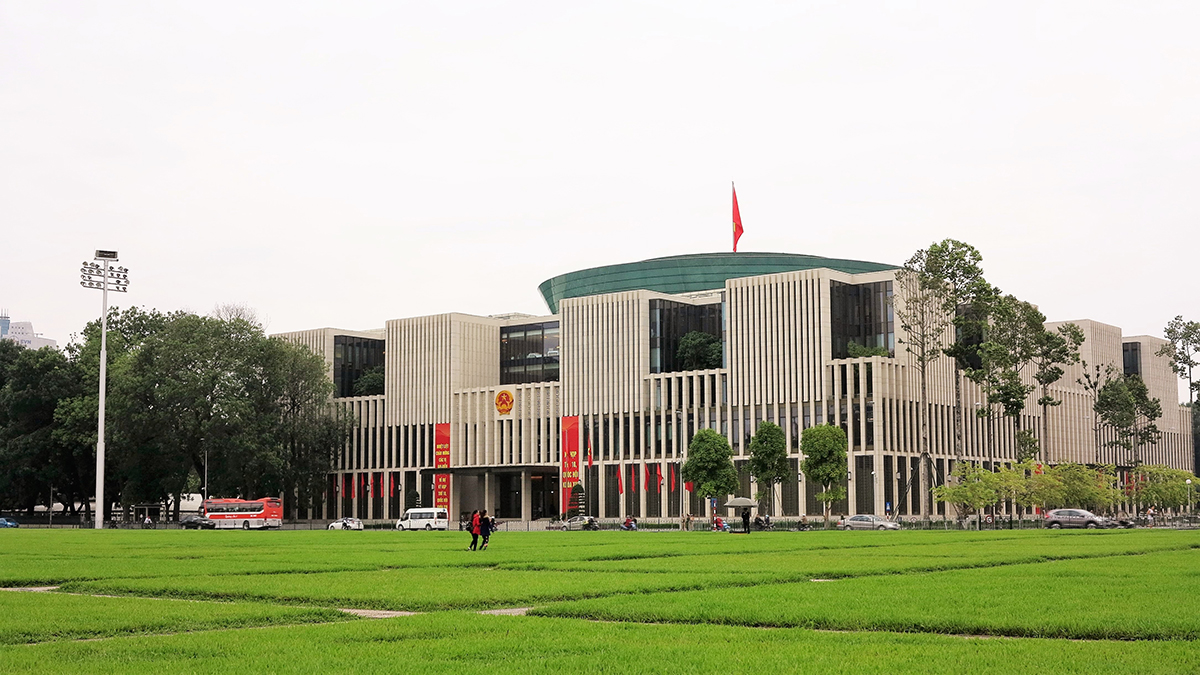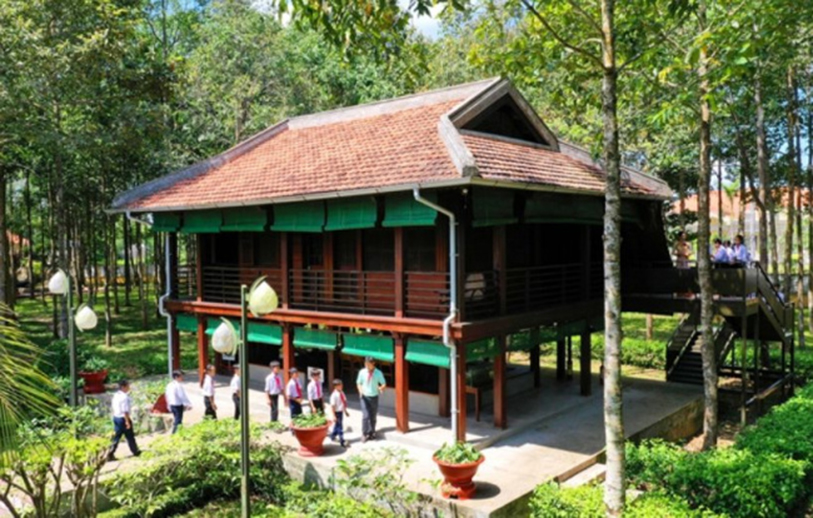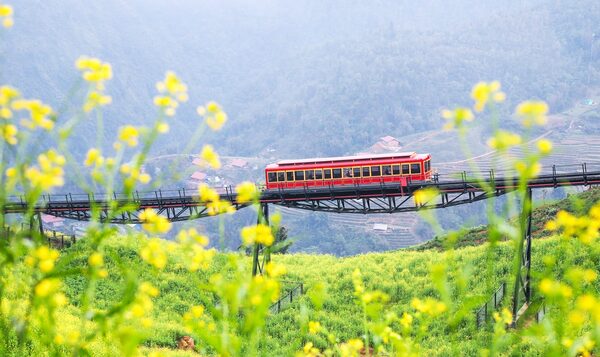Ho Chi Minh Mausoleum, a tomb in Ba Dinh Square, Hanoi – Worth to see?
Tourists visiting Hanoi frequently wish to see President Ho Chi Minh Mausoleum – the great leader of the nation and an extraordinary cultural celebrity of Vietnamese people.
If you plan on visiting the tomb, here is all you need to know ahead of time. Let’s explore together!
History of Ho Chi Minh Mausoleum
This is the location of President Ho Chi Minh’s body, as well as a site for Vietnamese and international tourists to pay their respects to the great leader of the Vietnamese people and the remarkable cultural celebrity of Vietnam.
The mausoleum of Uncle Ho is located at 2 Hung Vuong, Dien Bien ward, Ba Dinh district, Hanoi. The tomb was constructed on the site of the former platform in the middle of Ba Dinh Square, where President Ho Chi Minh read the Declaration of Independence, establishing the Democratic Republic of Vietnam.

In front of Ho Chi Minh Mausoleum
Uncle Ho requested that his ashes be burned and scattered in three different parts of the country following his death, according to his will. But the communist party leaders of the period were determined to retain his body intact and place it in a mausoleum so that people from all over the country may come to pay their respects.
So, in January 1970, the Soviet Union and Vietnam’s governments met to discuss the design and building approaches for the Mausoleum. The development began in February 1972, and the Ho Chi Minh Mausoleum was dedicated on May 19, 1975.
Uncle Ho’s mausoleum is a historical work of immense significance, showing the Vietnamese people’s heartfelt affections for the great leader. This is a cultural and historical emblem of the capital as well as a tourist attraction that attracts a huge number of local and foreign tourists whenever they visit Hanoi.

People are queueing to visit President Ho Chi Minh’s embalmed body
Regulations when visiting the mausoleum of President Ho Chi Minh
All visitors to the Ho Chi Minh Mausoleum must rigorously adhere to the following rules:
- Visitors to the mausoleum must be serious, dressed correctly, cleanly, and tidy.
- Visitors to the mausoleum must send their luggage and pass through security. Visitors are permitted to carry wallets containing money, precious metals, phones, and small cameras with the electricity turned off. Cameras and professional cameras are not permitted.
- Visitors to the mausoleum should respect the Organizing Committee’s directions and avoid jostling or pushing.
- When approaching the mausoleum’s entrance, everyone should hold a hat in their right hand, the hat facing out.
- When entering the Mausoleum, make no noise, do not point or touch the wall, do not put your hands in your jeans or coat pockets, and do not smoke.
- It is prohibited to film, photograph, or sketch photographs of the room where President Ho Chi Minh’s body is placed at the Mausoleum and to publish these images in the media.
Visiting the area in Uncle Ho’s Mausoleum
Ba Dinh square
The largest square in Vietnam is Ba Dinh Square, which is located in front of the Ho Chi Minh Mausoleum. Ba Dinh Square features a wide campus with numerous large grass plots, similar to the mats put on community yards in old Vietnamese villages. A 1.4 m wide boardwalk runs between the grass plots. The national flagpole stands in the center of the square.

National Assembly Building of Vietnam – Ba Dinh Square (photo: TTXVN)
Every day, the flag raising ceremony takes place between 6:00 – 6:30 a.m., while the flag lowering ceremony takes place at 9 p.m.
This is the site of frequent rallies and major commemorations of the country’s history. After numerous ups and downs throughout history, Ba Dinh Square has become the capital’s pride and a site that every tourist wishes to visit.
Monument to Heroes and Martyrs
The Monument to Heroes and Martyrs is opposite the Ho Chi Minh Mausoleum, near to the Imperial Citadel of Thang Long and the National Assembly House. There is a spacious ceremony yard in front of the memorial, with three stairs leading to the ceremony platform. The other three sides have up and down entrances.
Presidential Palace
The Presidential Palace was designed in the classical French style. The painting was originally created for the Governor General of Indochina. Uncle Ho labored here after the French colonialists left Vietnam in 1954 until his death in 1969. The Presidential Palace is currently only used to receive officials and organize family functions. water. The Phu campus is densely forested, with many large, mature trees. The public has limited access to the Presidential Palace.
The house on stilts
President Ho Chi Minh lived in a small stilt cottage rather than the grandiose Presidential Palace because of his natural simplicity. This location still houses relics from Uncle Ho’s life. Uncle Ho’s stilt house is composed of wood and features the Tay – Thai ethnic group’s 2-story architecture in Viet Bac. Uncle Ho’s requests were followed in the construction of the house. He talked with architect Nguyen Van Ninh about building a house on stilts like in Viet Bac, with a big first floor, two rooms on the second level, a divider to serve as a bookshelf between the two rooms, and a corridor surrounding.

President Ho Chi Minh’s house on stilts
The house on stilts is the longest dwelling and where Uncle Ho lived until the end of his life. This location is related to numerous significant events in the country, making it an architectural, cultural, and spiritual treasure.
Ho Chi Minh museum
Don’t miss the Ho Chi Minh Museum when visiting the Ho Chi Minh Mausoleum. This is a repository for artifacts and documentation related to the life and times of the great President Ho Chi Minh.
Time and tickets to visit President Ho Chi Minh’s mausoleum
The hours for visiting Uncle Ho’s Mausoleum vary depending on the season. Visitors might consult the table below before visiting the Ho Chi Minh Mausoleum:
| Days | Hot season (April 1 – October 31) | Cold season (November 1 – March 31) |
| Monday | Close | Close |
| Tuesday | From 7:30 AM to 10:30 AM | From 8:00 AM to 11:00 AM |
| Wednesday | ||
| Thursday | ||
| Friday | Close | Close |
| Saturday | From 7:30 AM to 11:00 AM | From 8:00 AM to 11:30 AM |
Sunday |
Normally, the tomb is closed for two months each year for restoration, from September to November. The exact time varies from year to year. Visitors will be unable to visit the tomb during this renovation.

Ho Chi Minh Mausoleum, Ba Dinh Square from above (Photo: Vietnamnet)
In terms of admission fees, all Vietnamese citizens are entitled to free admission to the Mausoleum. Foreign travelers can purchase tickets for 25,000 VND per person.
With the above information, hope you have a better understanding and can best prepare for your visit to Ho Chi Minh Mausoleum. If you have the opportunity to come to Hanoi, do not forget to visit Uncle Ho’s Mausoleum.
If you want to travel affordably, don’t forget to have a look at Vietnam Paradise Travel to enjoy many attractive discounts!














